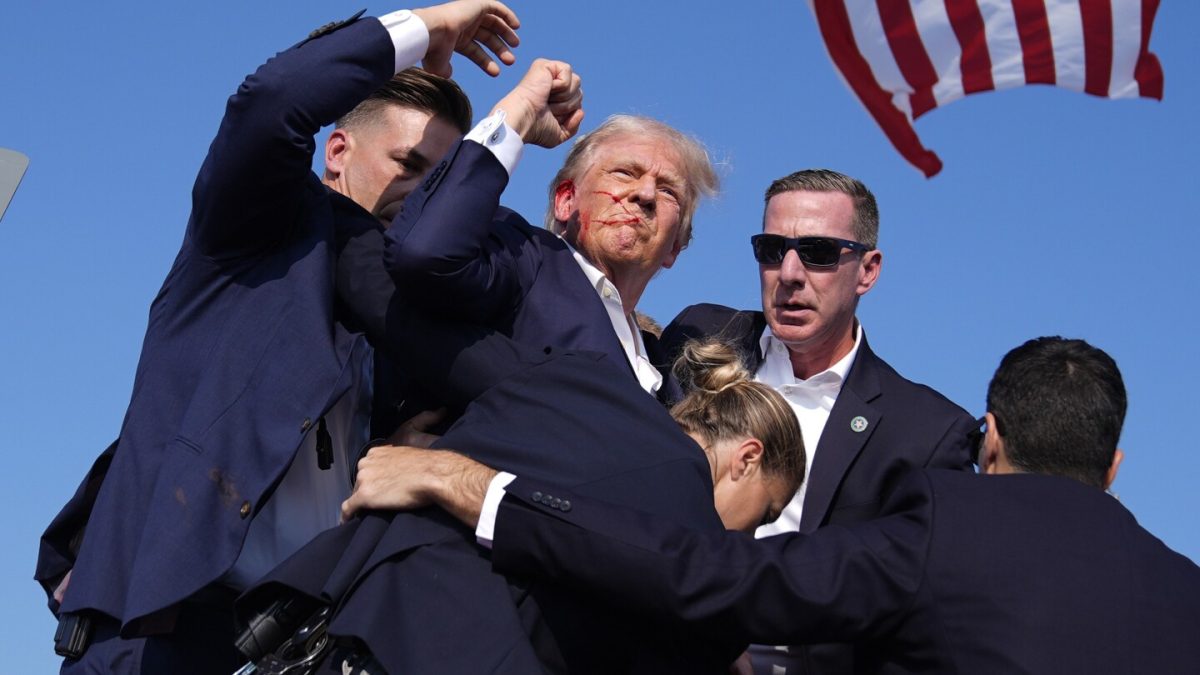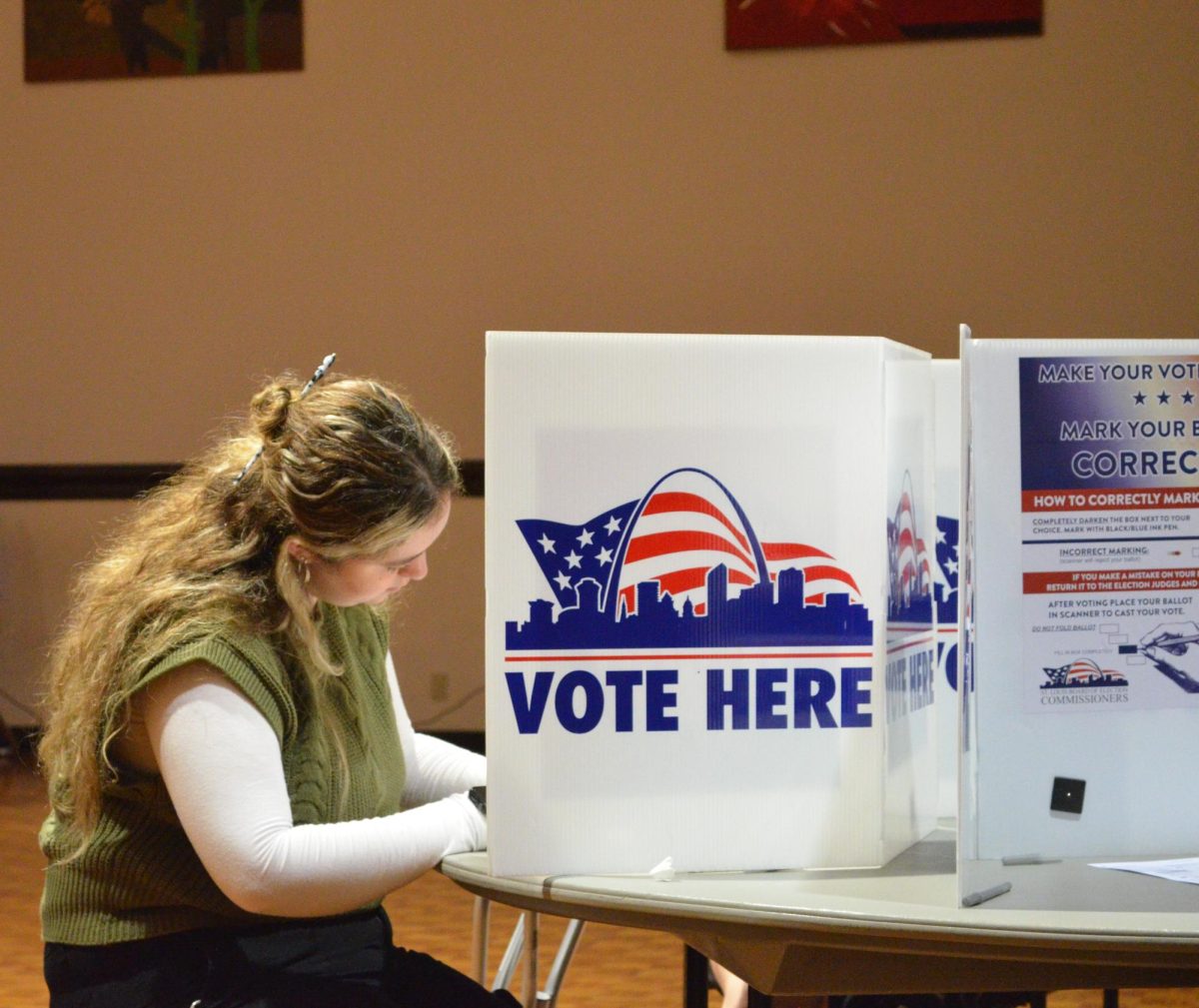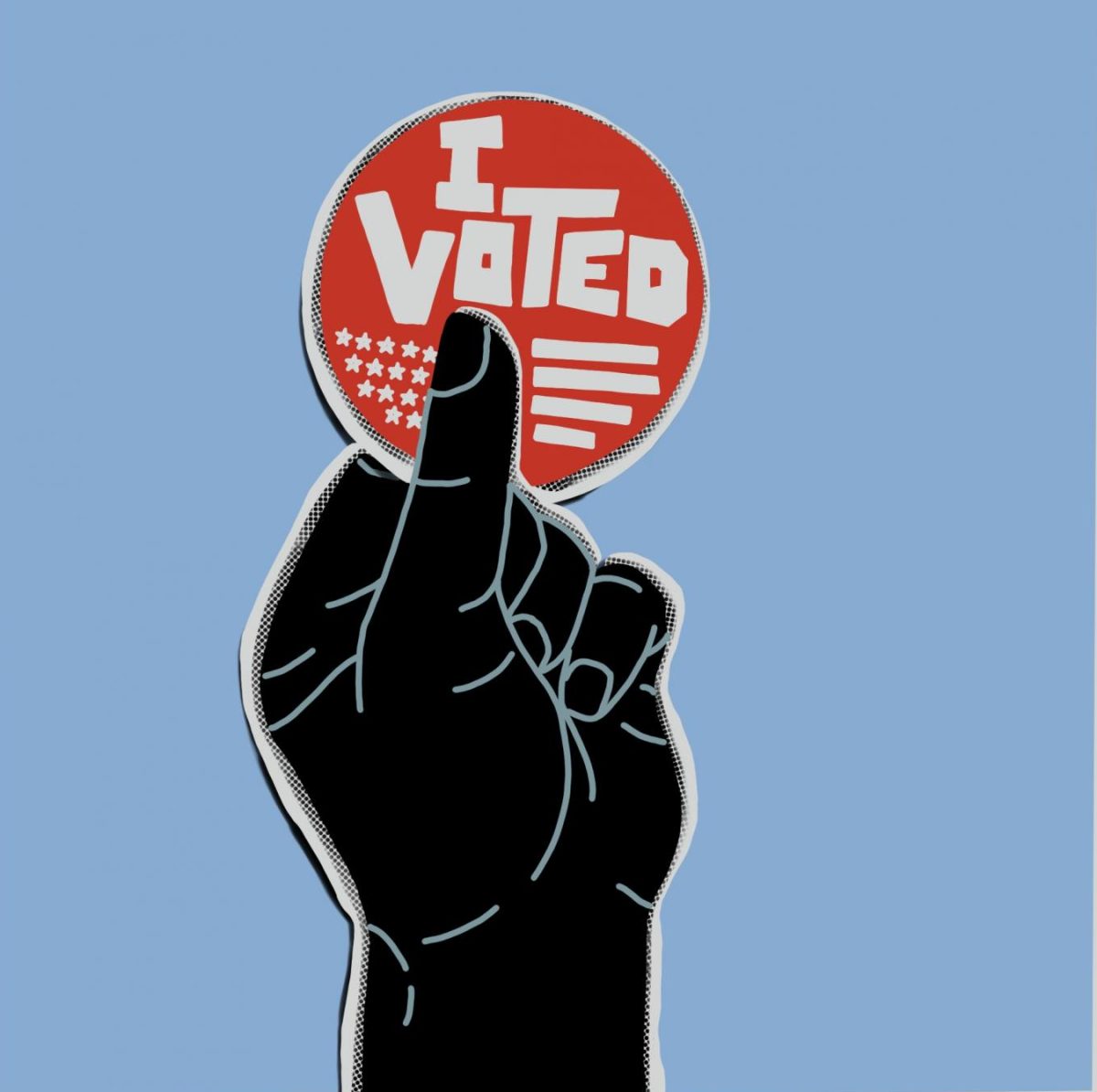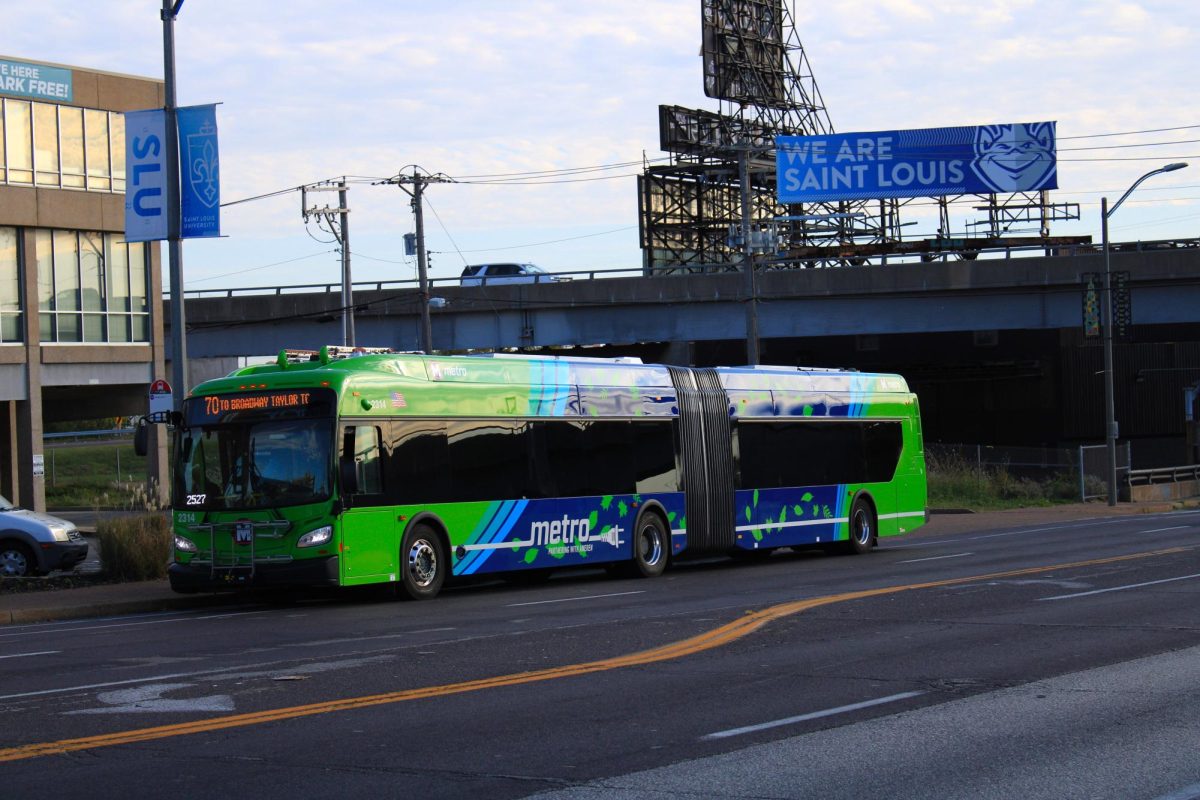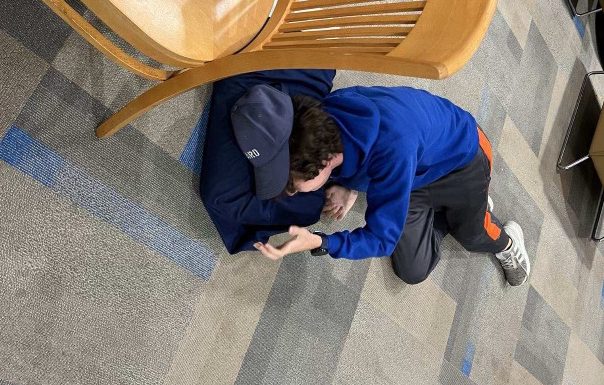Students convened with President Fred Pestello and members of the executive administration Monday evening, in the Center for Global Citizenship. It was the second of three town hall meetings organized, said Pestello, as “a way for us to give some updates on what’s happening and get some response from the campus community.”
In his introductory remarks, prior to audience questions, Pestello focused on appreciation and gratitude, citing the class legacy competition for its fundraising efforts. He also noted that the alumni-giving rate, which, he said, stood at “a fraction over 12 percent,” as opposed to some institutions where that figure lies between 20 and 50 percent. “I appreciate that you’re giving and setting a model,” he said.
Pestello then referenced the progress of two residence halls currently in various stages of construction. The groundbreaking ceremony for the Laclede building will take place on April 30, while the building at the corner of Grand and Laclede can expect to begin development in the fall, following the September board meeting.
The Clock Tower Accords received several minutes of elaboration. Components of the accords include an increased budget for the African American Studies program; a multifaceted strategy for the recruitment, retention, access and success of minority students; the development of a community center, a University-sponsored national conference on racial equality; a search for a director of diversity and community empowerment; and a Diversity Speaker Series to take place in April. “We have been meeting regularly to track progress on those accords,” Pestello said.
The meeting’s focus then turned to questions from the audience.
The first came from a history adjunct and president of the Graduate Student Association who took issue with the namesake of Frost campus, a Confederate general during the Civil War. He inquired after the possibility of changing the name “so we can have someone that represents the values of St. Louis University.” Pestello responded that he “will at least become familiar with the history of it” before taking any further action.
In response to a question concerning strategic planning, Pestello brought up intentions to invest in the university’s website, which, he said, “doesn’t reflect the quality of what we do here.” He approached the topic as seeking “excellence within the context of our institution and our mission.”
Pestello and students alike evoked the mission over the course of the meeting. In the context of last October’s events, Pestello said of the administration’s decision-making process: “We asked, ‘What does our mission, what do our values call us to do?’ We allowed our mission to guide us…What would Christ do?
One undergraduate asked about the availability of childcare resources on campus. Harris Stowe’s childcare services were referenced; although Pestello acknowledged that it would be “challenging and very expensive to start one up.”
A junior expressed concern for the homogeneity he saw in upper-level administration, particularly the lack of people of color. Pestello acknowledged this and affirmed that he and his colleagues “challenge ourselves to do all we can to diversify the pools” of candidates in consideration for senior leadership.
A mathematics graduate student and hockey player, who opened by saying that he was “really impressed and blown away by the depth and quality of questions asked,” proposed the idea of building a hockey rink on campus, citing the expenses involved in renting ice time elsewhere, as well as providing a resource to local athletes.
A former SGA executive board member called for the removal of the statue outside of Fusz Hall, arguing that it celebrated colonialism and imperialism, citing that the campus existed on “indigenous land.” Following a modest round of applause, Pestello warned, “not much in the academy happens ASAP,” but said he would consider the proposition. “I had heard of that before,” he said. “Thank you for bringing it up.”
A freshman history and political science major came forth to express concern that the University had strayed from its Jesuit, Catholic tradition, citing a move toward political correctness and “overtly promoting gay pride and a pro-choice platform,” as well as liberal bias in political science. Pestello replied that he believed the University’s stances were in line with Catholic tradition insofar as they valued inclusion and human dignity. Fr. Michael Barber, Dean of the College of Arts and Sciences and professor of philosophy, lent additional comments pertaining to the high status of SLU’s academics, particularly its program in medieval philosophy and its theology department.
Residence life became the subject of the following question. Kent Porterfield, Vice President for Student Development, said that current attention rested on antiquated first- and second-year student housing. He spoke of a shift occurring that had shaped design planning: an excess demand for University housing compounded with an initiative to free-up Marchetti Towers for upperclassmen. There is a move to reinvigorate the entire student housing system—one that will take several years to accomplish, he said.
The meeting’s penultimate question addressed the topic of adjunct faculty. The student, a senior public health major, stated that adjuncts make up 41 percent of SLU’s teaching staff, yet did not receive the same benefits as full-time faculty. “I don’t see anything unusual in our turnover patterns,” said Ellen Harshman, Interim Vice President for Academic Affairs. Administration, she added, seeks to “provide an environment that allows [full-time faculty] to do their job in the best way possible.” They also want to ensure that part-time faculty members have a connection to those faculty, as well as access to the teaching supports they receive, she said. “[Adjuncts] are an important part of the resources we have for all of our students … the work of our part-time faculty is very important to us and we take it very seriously.”
A sophomore asked the meeting’s final question on the topic of tuition increases and where they go within the University. Pestello opened his response with his view that tuition costs represent “the greatest tension in Jesuit higher education today.” He explained that a 3.6 percent tuition increase occurred in tandem with an increase in the amount of student aid, which comprises $100 million of SLU’s endowment, devoted to scholarships. The university’s objective, he said, is to “see where we can save money while still providing first-class education.
A final town hall meeting with the president will be held on the Medical School’s campus sometime before the semester’s end.
![]()



